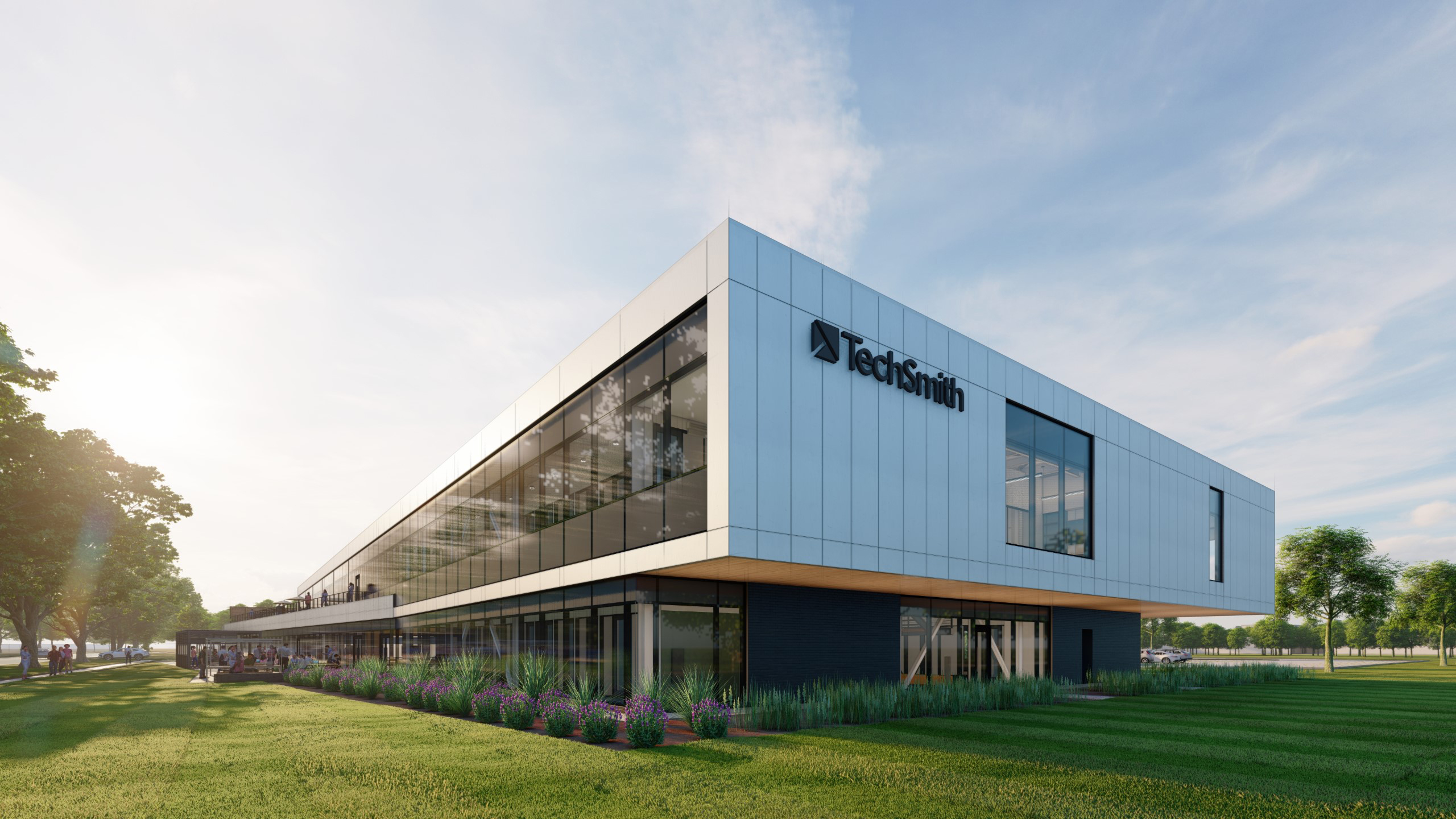
Located in East Lansing, MI, the 63,000-square-foot headquarters for software company TechSmith opened in fall 2022. The building features nearly 150 meeting spaces, ranging from small offices designed for one person and a guest, all the way up to a training room designed for 50 people—and every size in between.
According to David Zink, director of shared services at TechSmith, the company provides screen capture software and productivity solutions for more than 73 million people globally, and is most known for Snagit, an asynchronous workplace communication tool; Camtasia, an all-in-one screen recording and video editor; and Audiate, an audio recorder and text-based audio editing application.
In 2019, during the initial planning stages for the $15 million building, Zink and his team sought “hybrid-friendly” room solutions while still having the majority of employees working in the office. “It was around this time we signed our first deal with Zoom to integrate its Zoom Rooms feature for video conferencing,” Zink said. “We were looking to make it a better experience for the small percentage of folks that were remote at that time because equity was still just as important to us then as it is now. We were looking at different brands of cameras and microphones and talking through what we might want to try and then the pandemic hit.”
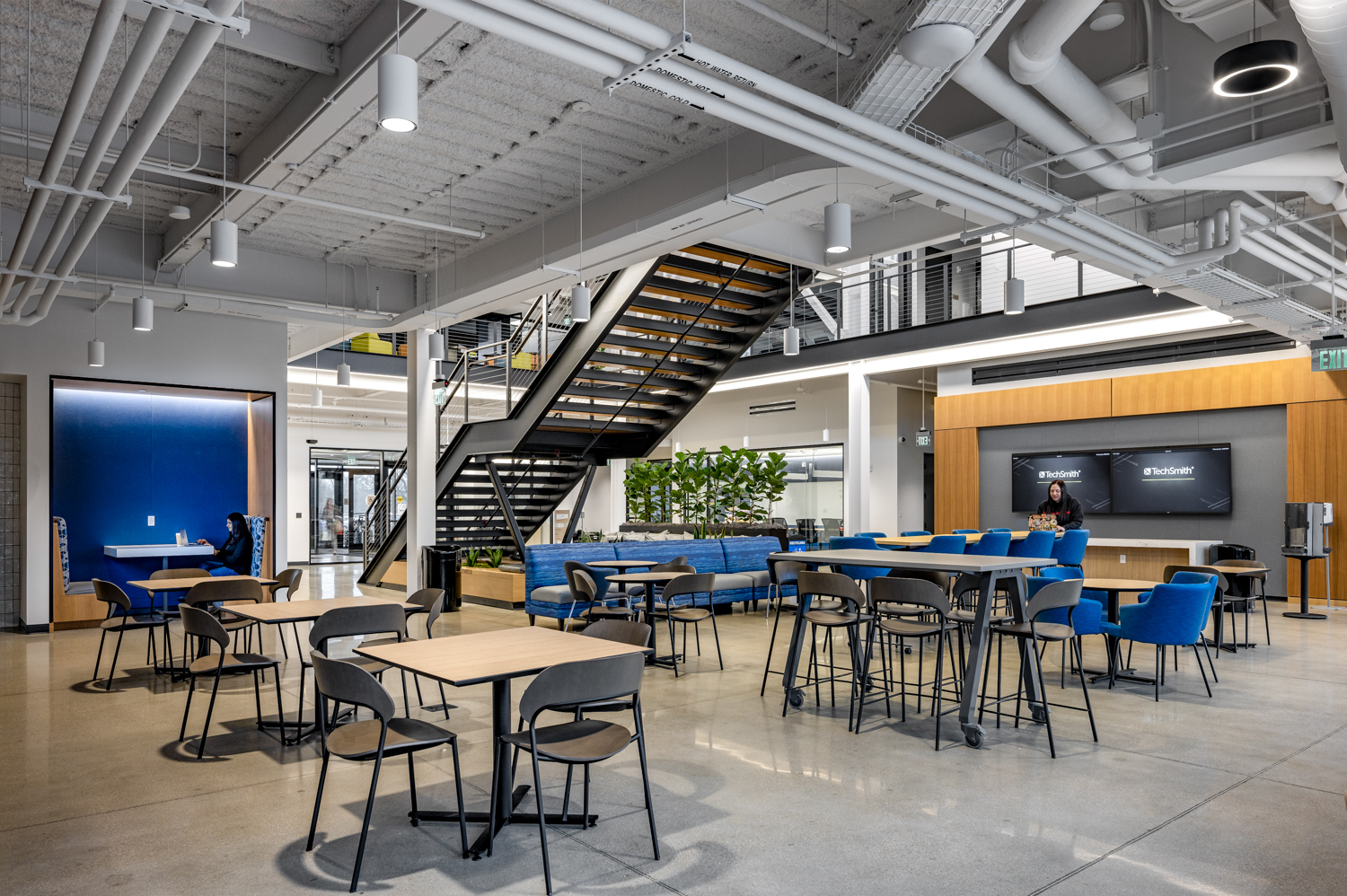
A Change of Plans
When the pandemic forced TechSmith to go fully remote, the team’s priorities for their new headquarters shifted. “We had to reset on some of the planning, and shifted the focus to be 100 percent ‘hybrid-first,’” Zink said. “An example of this new planning focus was scaling back the building from three stories to two and adding more space in the team rooms.”
And while Zoom had been a part of the company’s collaboration framework from the start, the platform suddenly took center stage. “All of our collaboration spaces were built from the ground up with Zoom technology, where the push of a button can bring up all the current meetings happening across offices. As part of our ‘hybrid-first’ focus, the team rooms were specifically built with Zoom-enabled Neat.boards so brainstorming can happen from anywhere and at any time.” Zink continued, “The Neat.board was best suited for our needs, as they offered a 65-inch size.”

AV-Enabled Collaboration
In addition to the Neat.boards, a number of complementary technologies have helped facilitate hybrid work at TechSmith. “For our larger collaboration spaces, we wanted to get away from having to pass around a microphone for hybrid meetings,” Zink said. “So we outfitted our conference rooms, board rooms, and training rooms with ceiling-mounted microphone arrays (approximately 32 microphones in each room) from Yamaha UC and Shure.”
As for the small offices that were not equipped with ceiling-mounted mics, Zink and his team selected the Razer Seiren X. “After rigorous testing, we went with the Razer due to its cost and ease of use. We liked that it had a physical mute button but not a lot of other controls to worry about. We learned that when it comes to outfitting an office with tech, usability is the most important component.” He continued, “So far, this decision has done really well for us. We also tested the microphones with Snagit, Camtasia, and Audiate since we use those to regularly communicate asynchronously.”
And while a small number of employees with dedicated offices opted for single, ultra-wide computer monitors in their offices, they outfitted the majority of spaces with dual Dell UltraSharp 27 4K USB-C hub monitors. “The general consensus was two 4K displays provided us flexibility for developers and testers to use those displays at various resolutions, and that would better allow them to test customer issues as our data showed fewer customers used ultra-wide displays,” Zink said.
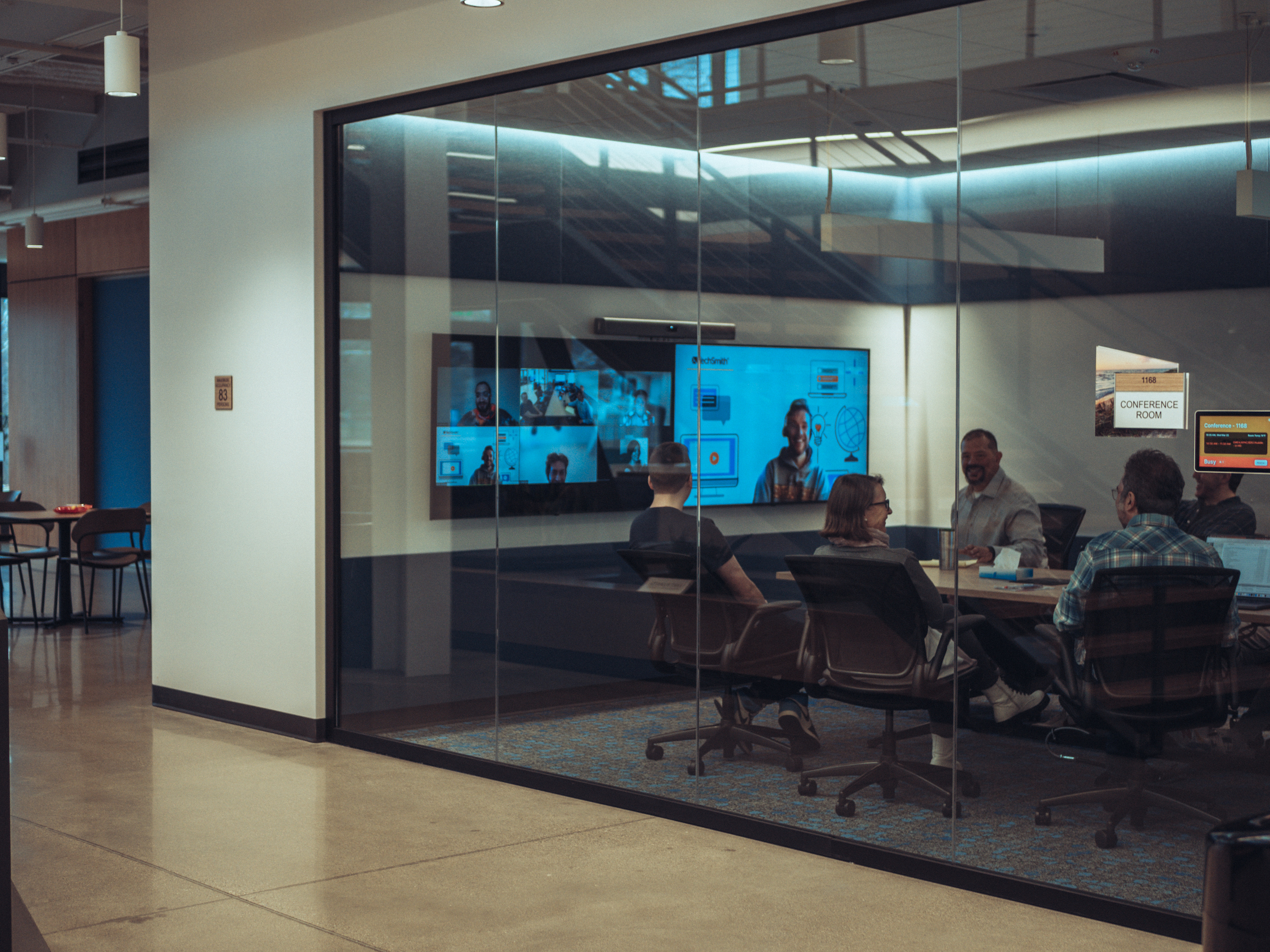
Hybrid Culture
Zink emphasized that it wasn’t just the building that changed, but also the culture within the building. “Towards the end of the pandemic in July 2022, we held an ‘Async-First’ experiment where all teams, almost exclusively, worked and communicated asynchronously through Zoom, Slack, or by sending pre-recorded videos through our Snagit and Camtasia products,” he said.
“This was originally to address the virtual meeting fatigue and our employees’ desire for ‘fewer, better meetings.’” Zink continued, “But the feedback from this experiment also helped shape our current flexible work policy and solidified our vision for what the new building is today—a structure created to establish equitable communication where everyone can participate on equal footing, whether remote or in-person.”
TechSmith’s hybrid policies, in concert with the collaboration tech and the layout of the building itself, have ultimately resulted in greater scheduling flexibility and improved work-life balance among staff, without sacrificing the employee interactions that are vital to moving the company forward. The hybrid work policy has guidelines on what types of communication make the most sense.
“In-person is considered the richest form of collaborative work and is important when the goal is to build and maintain relationships (onboarding, team bonding, celebrations) and working on a single project or problem to completion,” Zink said. “Synchronous is preferred when something requires immediate feedback or time-sensitive decisioning is required, and when there is ambiguity or sensitivity to the subject matter at hand (discussing a new problem that spans multiple teams, IT fire drill, etc.). Asynchronous is ideal when collaboration isn’t immediate and doesn’t need to occur in real-time (solicit feedback, review content) or when there is a one-way share of information (quarterly updates, campaign results). Our current hybrid culture enables and supports treating people equitably, empowering people to take accountability, being transparent and inclusive.
This is literal, as there are policies promoting accidental employee ‘collisions’ that leadership believes spark innovation that is irreplicable in remote-first environments. On the flip side, now that we are 100 percent hybrid-first, more people are willing to stay home when they are sick and don’t feel the pressure to go in and prove something.” He continued, “Our belief is that ‘anyone can work from home,’ but when you’re in the office, take that one or two days a week to interact and engage with others, which naturally helps create new innovative ideas.”
[How the AI-Powered Zoom Workplace Will Reimagine Teamwork]
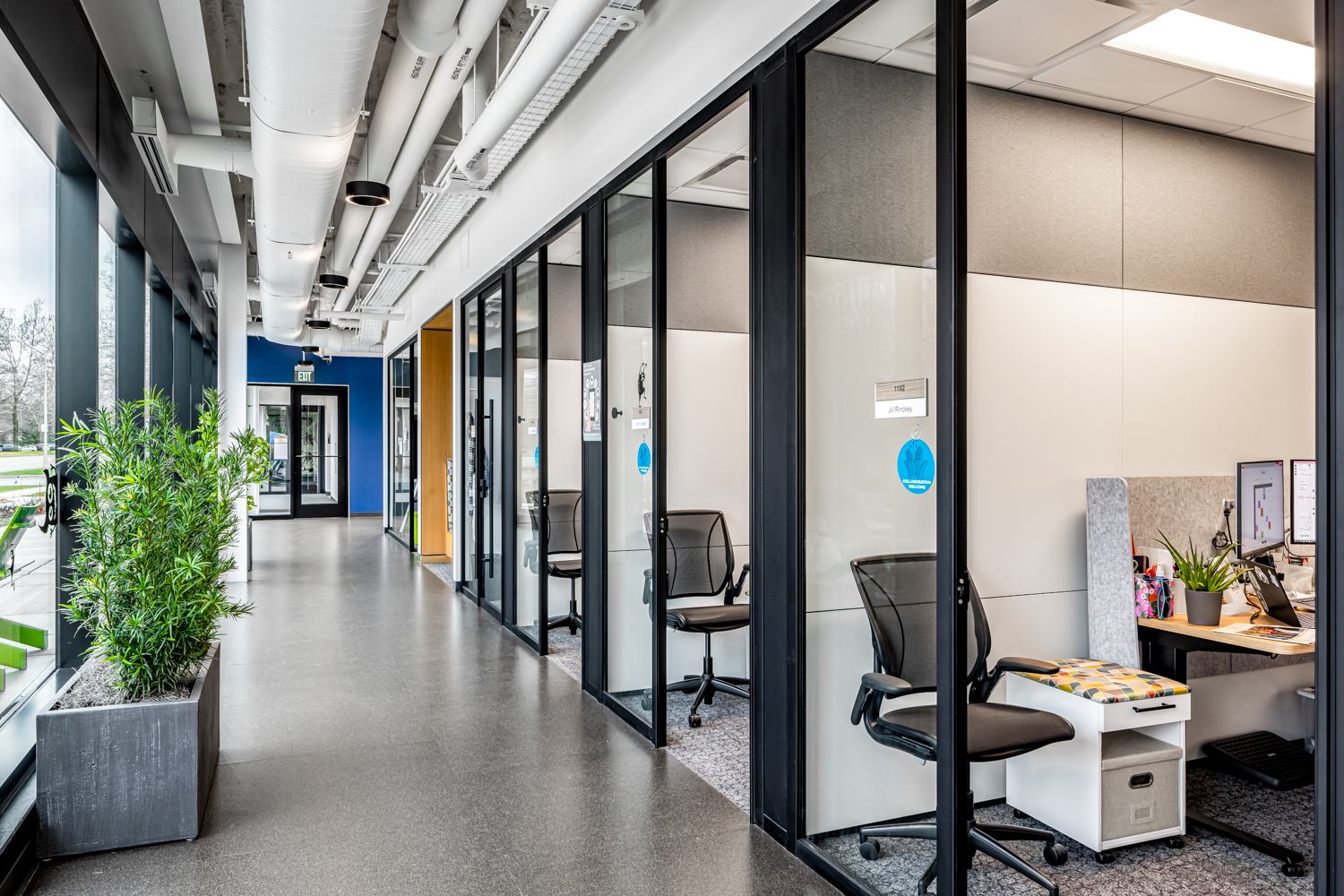
A Worthwhile Investment
Feedback on the variety of collaborative meeting spaces in the new building has been overwhelmingly positive. The team rooms, which are designed for groups of six to eight people, have proven to be particularly popular. “On most Tuesdays and Wednesdays, which are the most common days for hybrid workers to come into the office, all 23 of those rooms are usually occupied,” Zink explained. “There isn't a single department that doesn't try to get time in a team room at some point during the week. In fact, people quite often use the Neat.board for brainstorms even when they are not on a Zoom call!”
Zink noted that the more than $6 million investment has been worth it to ensure a parity of experience for all TechSmith employees. “All of this was necessary so our in-office, remote, and hybrid staff could all come together and work in a way that is equitable and feels natural,” he said. “Without all of these technologies, we wouldn’t be able to work as seamlessly as we do, and it also serves as an important reminder to all staff that they are treated equally when in-office or remote.”
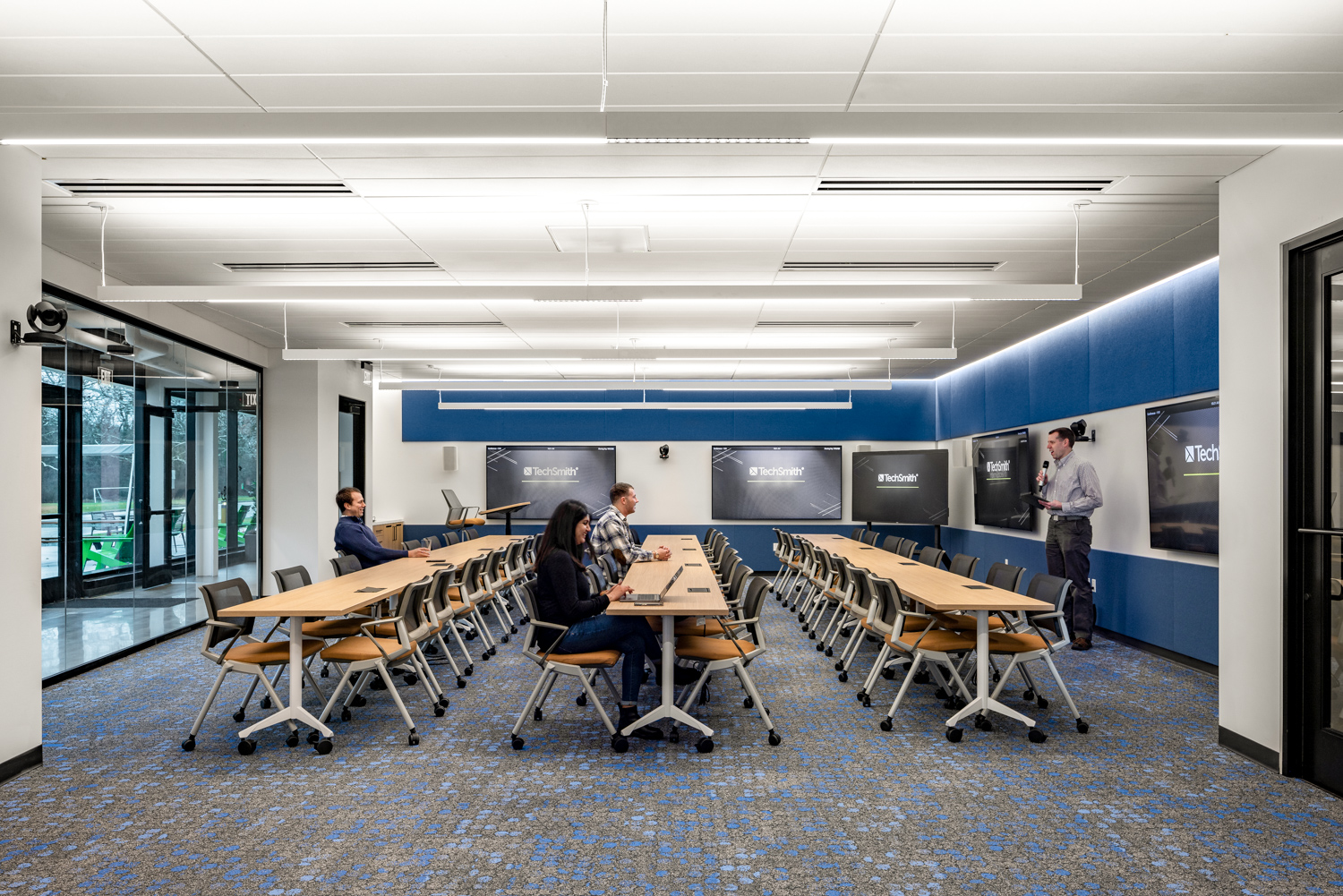
Hybrid Wisdom
As many companies are looking to move into new spaces or to reduce the overall footprint, Zink offered the following advice. “Whether you're building a new building, or just trying to reduce your footprint, my best advice is to involve employees in the discussion. Consider what they need, be as flexible as you can with what you're going to offer and focus on doing it well and not taking shortcuts to get there. Think about outcomes, not necessarily size/footprint. It’s more about what your employees want to use the space for and less about the actual size.”
For CEOs still grappling with giving into a hybrid workplace, Zink offered the following. “Any decisions, whether to stay fully remote, in-person or become a hybrid workplace, should be supported by information such as employee sentiment, which can be captured via employee surveys, and an understanding of how a hybrid environment may impact the way your product or service is developed or the way you engage with customers. It is also important to realize and communicate that a shift to hybrid is an evolving process so different policies and rules may change as you’re trying to find the right balance.”
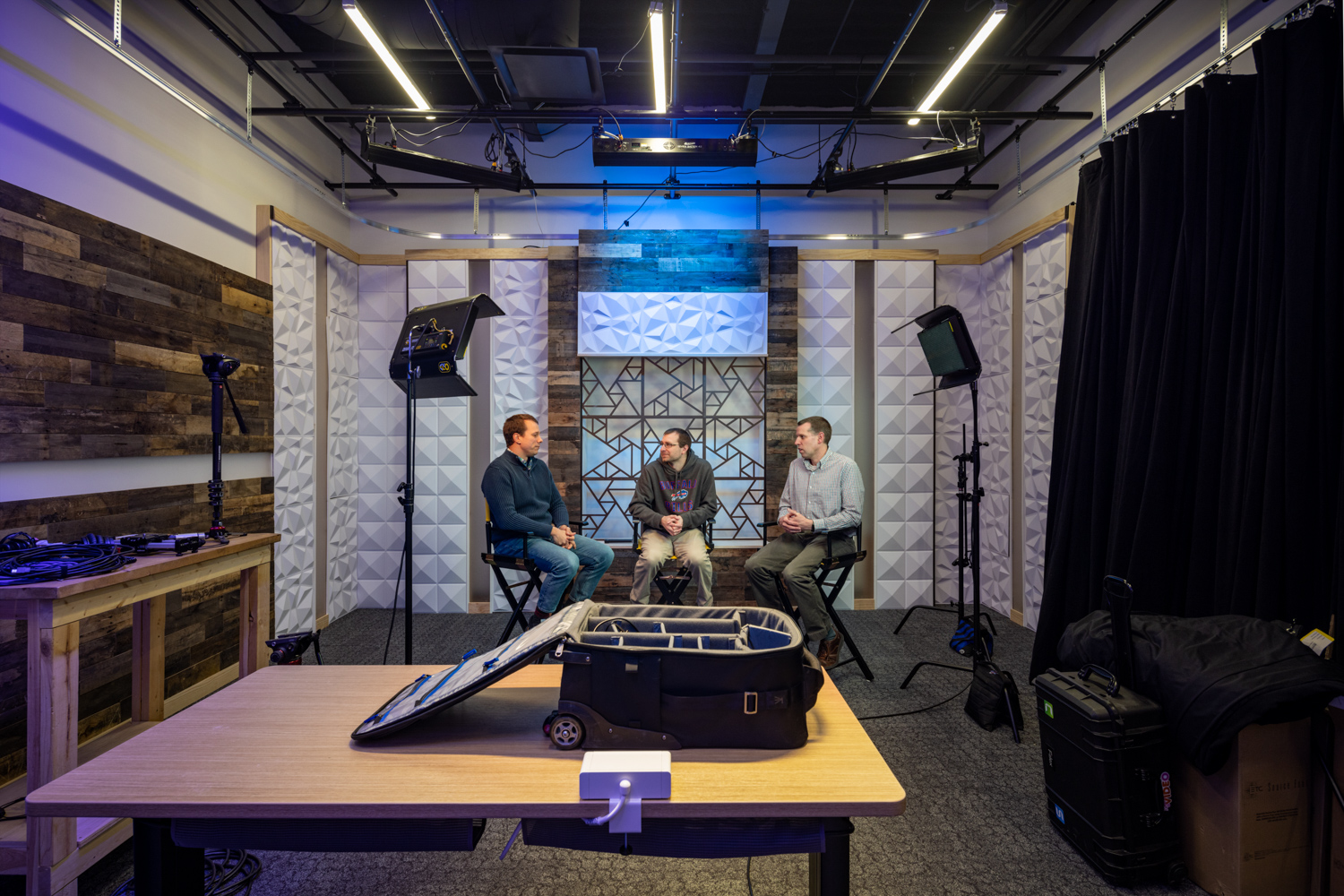
ROOMS WITH A PURPOSE
TechSmith has a variety of different collaboration spaces in different sizes.
>> 70 “smoffices” (small offices, designed for one person and a guest chair)
>> 30 double rooms (designed for two people)
>> Five huddle rooms (designed for four people)
>> Four standup rooms (designed for eight people)
>> 23 team rooms (designed for six to eight people)
>> Six conference rooms (designed for nine people)
>> One board room (designed for 15 to 25 people)
>> One training room (designed for 50 people)
>> One creative collaboration space (designed for eight people)
>> One “programming” room (designed for two people): This room is typically used by developers, QA, marketing, HR and a few other departments. It has two 65-inch screens and two desks that people can sit at and wirelessly share to screens via Zoom.
>> One video studio: This was the most expensive room with lights and extra insulation that any employee can use.
>> One audio recording room
>> One atrium space with two 75-inch DTEN screens: Generally one displays company information and the other screen is used as a digital whiteboard or we have used it to display meetings that are going on in the training room as it is near where we have snacks and refreshments are and it is also used as an overflow space.
PLUS: The family room, four wellness rooms, and the game room have a screen with Zoom to display company information. TechSmith partnered with a local arcade to rotate a couple of pinball machines and a Ms. Pac-Man/Galaga cabinet.







